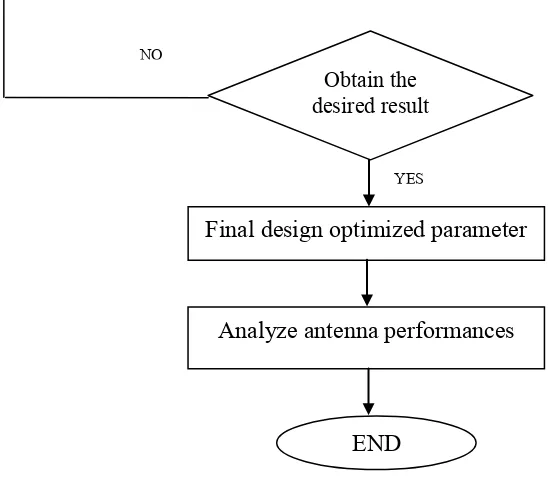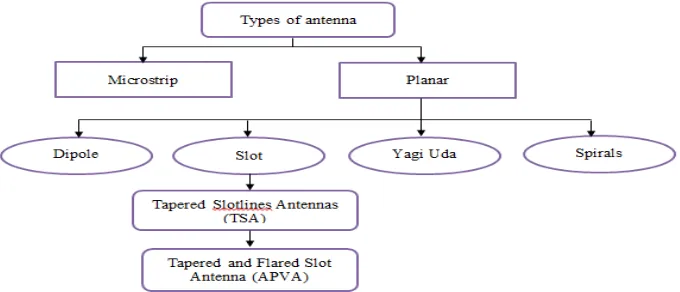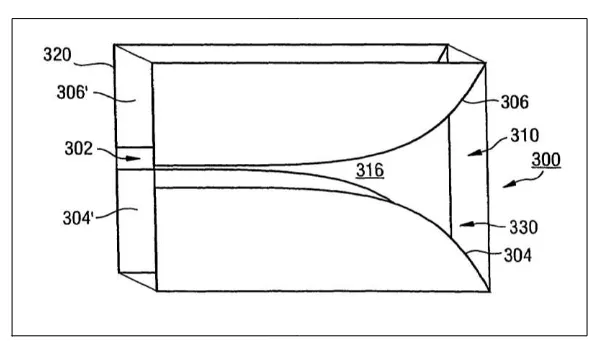THE DESIGN OF ANTIPODAL VIVALDI ANTENNA USING
GRAPHENE
NURUL SYUHADA BINTI HASIM
THE DESIGN OF ANTIPODAL VIVALDI ANTENNA USING
GRAPHENE
NURUL SYUHADA BINTI HASIM
This Report is submitted in Partial Fulfilment of Requirements for The Bachelor Degree of Electronic Engineering (Wireless Communication)
Faculty Kejuruteraan Elektronik dan Kejuruteraan Komputer University Teknikal Malaysia Melaka
ii
UNIVERSTI TEKNIKAL MALAYSIA MELAKA
FAKULTI KEJURUTERAAN ELEKTRONIK DAN KEJURUTERAAN KOMPUTER BORANG PENGESAHAN STATUS LAPORAN
PROJEK SARJANA MUDA II
Tajuk Projek : THE DESIGN OF ANTIPODAL VIVALDI ANTENNA USING GRAPHENE
Sesi
Pengajian : 1 4 / 1 5
Saya ………..
mengaku membenarkan Laporan Projek Sarjana Muda ini disimpan di Perpustakaan dengan syarat-syarat kegunaan seperti berikut:
1. Laporan adalah hakmilik Universiti Teknikal Malaysia Melaka.
2. Perpustakaan dibenarkan membuat salinan untuk tujuan pengajian sahaja.
3. Perpustakaan dibenarkan membuat salinan laporan ini sebagai bahan pertukaran antara institusi pengajian tinggi.
4. Sila tandakan ( √ ) :
SULIT* *(Mengandungi maklumat yang berdarjah keselamatan atau kepentingan Malaysia seperti yang termaktub di dalam AKTA RAHSIA RASMI 1972)
TERHAD** **(Mengandungi maklumat terhad yang telah ditentukan oleh organisasi/badan di mana penyelidikan dijalankan)
TIDAK TERHAD
Disahkan oleh:
__________________________ ___________________________________ (TANDATANGAN PENULIS) (COP DAN TANDATANGAN PENYELIA)
iii
DECLARATION
I hereby, declared this report entitled “THE DESIGN OF ANTIPODAL VIVALDI ANTENNA USING GRAPHENE” is the results of my own research except as cited in references.
Signature : ……….
Author‟s Name : NURUL SYUHADA BINTI HASIM
iv
APPROVAL
This report is submitted to the Faculty of Electronic and Computer Engineering of UTeM as a partial fulfillment of the requirements for the degree of Bachelor of Electronic Engineering (Wireless Communication). The member of the supervisory
committee is as follow:
Signature : ………
Supervisor‟s Name : MR. AZMAN BIN AWANG TEH
v
DEDICATION
“In the Name of Allah, the most Beneficent, the Most Merciful”
Special dedication to my family, especially my father and mother
(Hasim Bin Brahim and Jaa’rah Binti Sahider)
vi
ACKNOWLEDGEMENT
Bismillah ir-Rahman ir-Rahim. Alhamdulillah, Praise to Allah S.W.T for His blessing and guidance have helped me in completing my degree thesis.
I would like to thank my supervisor, Mr. Azman Bin Awang Teh who is continuously spending his time in showing his support, guidance, encouragement and supervision in the making of this thesis.
I would also like to express my gratitude and appreciation to my family members especially my father, Mr. Hasim Bin Brahim and my mother Mrs. Jaa‟rah Binti Sahider for their unconditional love, morale support and prayer along my studies. Their fully support has given me enough strength and inspiration in pursuing my ambition in life as well as to complete this project.
vii
ABSTRACT
viii
ABSTRAK
x
III ANTIPODAL VIVALDI ANTENNA DESIGN
xi
IV CONCLUSION AND FUTURE WORK
5.0 Conclusion 62
5.1 Future Work 63
xii tapered length, D between graphene and copper
xv
LIST OF ABBREVIATION
Abbreviation Description
APVA Antipodal Vivaldi Antenna
AUT Antenna Under Test
BW Bandwidth
c Velocity of Light in a vacuum
CST Computer Simulation Technology
dB Decibel
EIRP Equivalent Isotropic Radiated Power
FCC Federal Communications Commission
FNBW First Null Beamwidth
1
CHAPTER I:
PROJECT INTRODUCTION
1.0 Introduction
In developing of communication system nowadays, ultra-wideband (UWB) antennas are widely designed and developed for medical and military purposed. The antennas usually being proposed in radar application for detect the images in greater accuracy and more efficient. Referring to the Federal Communications Commission (FCC) standards, an antenna is known as UWB antenna as it is reaching the range of spectrum from 3.1- 10.6 GHz [1][8][15][24]. Therefore, such antenna must be compact in size as well as less weight for portability at both transmitter and receiver [2].
The Antipodal Vivaldi Antenna (APVA) is having the suitable features suit the characteristics of the UWB design characteristics as it is classified as Tapered Slot Antenna (TSA). It is explained as an endfire travelling wave antenna which exhibits a wide beam width and moderately high directivity [3]. Besides that, antipodal Vivaldi antenna has some other advantages such as low lobe level, high gain and adjustable beam width. The stripline tapered notch is the first TSA presented in the industry.
1.1 Problem Statement
2
on the parameter of antenna required to obtain the optimized value of the reflection coefficient, gain, beamwidth, realized gain and directivity are required. However, the improvements in the parameter leads to manufacturing complexity by the used of dielectric rod in order to increase gain and increase the substrate layer for directivity which will also leads to the increments of cost of the production of an antenna.
In the other hand, the capabilities of APVA antenna that built from copper are required to be improving by using graphene. Graphene is a material which has the ability of a better conductivity compared to copper. With such characteristic, the process of data transfer could be upgrade up to terahertz (THz) [2] [4] [24].
1.2 Objective:
a) To simulate the Antipodal Vivaldi antenna (APVA) by using CST Studio Suite software.
b) To analyze the reflection coefficient, gain, radiation pattern, realized gain and directivity over the parameter of APVA.
c) To observe the variance in performance of 2 type of materials used in the design of antenna (copper and graphene).
1.3 Scope
3
parametric study is made to get the optimize design of the antenna. These projects only cover on CST software simulation.
1.4 Methodology
The methodology are stated the flow of process use in the thesis. The flow of this thesis is started with making a literature review of the related topics. The literature are done by referring various types of sources such as books, technical journal, articles, website as well as the technical reports related to the following topics of AVPA. The literature review is done so that the researcher getting the idea and knowledge of the design and the parameter of the antenna so that the processes of designing are easier to understood.
Then, the designs related were simulated so that the antenna parameters could be observed and measured. The dimension of the antenna will later be modified accordingly so that it meets the specification of this thesis. The designs of the antenna are completely using CST Microwave Studios.
4
Figure 1.1 Flowchart of the project
1.6 Thesis Outline
Thesis outline is stating contains of the thesis. This thesis is consisting of five chapters that covered all the research works of the design of APVA.
a) Chapter I are introducing the surface of the project. This is including a brief introduction of the APVA design. At this part of the thesis, the problems statements, objectives of the project, scope of works, methodology, and flow chart of the methodology used in the project are also stated.
b) Chapter II came along after chapter I is completed. Chapter II briefings the literature review of design concerning about the study for the research and the design technique that is related of this project. Then, encloses of Chapter II will be implemented at the next chapters of the thesis.
5
parameter such as gain, realized gain and directivity will be discussed thoroughly in this chapter.
d) The findings of the final design of APVA are deliberated at chapter IV. All of the results of simulation will be observed and discuss in this chapter. The results will also be recorded and explained at the chapter.
6
CHAPTER II
LITERATURE REVIEW
2.0 Introduction
Antennas are the main component of most of the wireless communication system. Antenna allows the process of sending and receiving signal within the devices at certain distance. Referring to the IEEE Standards, the term of the antenna are define as means for the purposed of radiating or receiving of the radio waves at free space [6] [14]25] [26]. There are a lot of antenna parameter that can be measured such
as return loss, gain, radiation pattern, Half-Power Beamwidth (HPBW), First-null Beamwidth (FNBW), directivity, and efficiency. This parameter is very important as they are used tocharacterize the types and the performance of an antenna. There are various types of antenna that commonly used in the industry. Each of the antennas is design for different types of application. The antenna can be classified in two main families which is microstrip and planar antennas structure. Figure 2.1 below shows the types of antenna structures.
7
2.1 Category of Vivaldi Antenna
APVA is the antenna that born from the improvement of Conventional Vivaldi antenna which is invented by Peter Gibson in the year of 1978, in United Kingdom [4]. TSA are having the Transverse Electromagnetic (TEM) stripline mode where a number of voltages are excites across the gap of the notch of the antenna. Figure below are illustrating the patent images of the three types of Vivaldi antenna:
2.1.1 Conventional Vivaldi antenna
Figure 2.2 Conventional Vivaldi antenna
The design of the Conventional Vivaldi antenna is basically smoothly flaring from a narrow slot over the center conductor transition region to a wide aperture at the board edge. An open circuit terminated at the center of the conductor by some distance beyond the slot. The antenna is stimulates by a slot line and the taper shape are design by using the equation:
Where the value of a, b and m are constant. The equation can also be used to design the Antipodal Vivaldi and Balanced Antipodal Vivaldi antenna.
8
2.1.2 Antipodal Vivaldi antenna (APVA)
Figure 2.3 Antipodal Vivaldi antenna
To solve the feeding problems in the Conventional Vivaldi antenna, APVA are being introduced and studied by W. Nester in 1985 and the effort continued by E. Gazit in 1988 [6]. In the design, APVA is formed on a symmetric tapered radiating
slot is formed by two arms printed on opposite surfaces of a dielectric substrate. Based on “Ultra-wideband Antennas and Propagation for Communications, Radar and Imaging” (2007) written by Allen, APVA is formed by exponentially tapering the inner and outer edges of the slot line conductors of the radiator. The antipodal Vivaldi antenna comprises tapered radiating slot and feeding transition. The feeding transition consists of a 50Ω microstrip line exponentially tapered to a parallel strip line to feed the tapered slot radiator, whereas the ground trace is exponentially tapered [5].
2.1.3 Balanced Antipodal Vivaldi antenna
Lastly, Balance Antipodal Vivaldi antenna was introduced by Langley, Hall and Newham in the year of 1996 [7]. The improvement in this radiator is by adding



